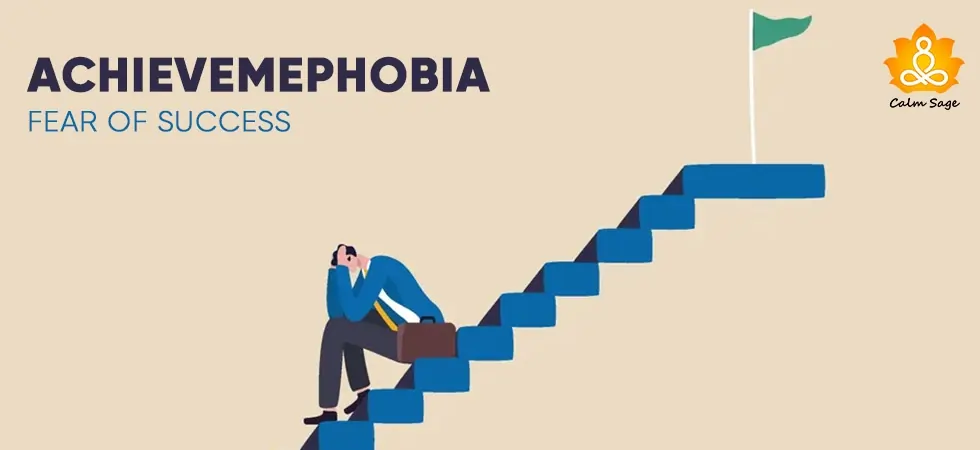All You Need To Know About Ommetaphobia (Fear Of Eyes)

The first ever impression while meeting someone is the eye contact we make or maintain… our eye contact reflects our personality, strengths, honesty, kindness, generosity, and whatnot! But what happens when someone has a fear of eyes? Yes, fear of eyes is for real.
Ommetaphobia which is fear of eyes is a specific type of phobia that can be so severe or extreme that it can interfere with social activities, personal life, and professional life. Ommetaphobia is not only limited to a stare or looking straight into the eyes, but it involves a particular object, situation, person, or activity with eyes.
People who struggle with fear of eyes may avoid being in a situation wherein making eye contact is important. Even the fear can get so extreme that they try to avoid thinking about their eyes!
In this blog, let us read everything we need to know about Ommetaphobia. So, let’s get started!
What is Ommetaphobia?
Ommetaphobia is a fear of eyes that can make people preoccupied with the phobia of eyes. It is one of the specific phobias which interferes with the quality of life.
In this phobia, people avoid wearing glasses, sunglasses, or lenses due to fear and anxiety spiraling with negative thoughts related to the eyes. It can also be triggered by stare or glare, people with severe Ommetaphobia are likely to struggle with panic attacks as well.
Examples of Ommetaphobia
Some common examples of Ommetaphobia include:
- Making eye contact when speaking in public places.
- Socializing with others and avoiding eye contact.
- Avoiding visiting an ophthalmologist or eye doctor for proper diagnosis
- Fearing eye masks
- Fear of getting sand, objects, or other substances in your eyes
- Fear of seeing fake eyes during Halloween
Quick Fact-Check Related to Ommetaphobia
- Females are more likely to struggle with phobia as compared to males.
- People struggling with OCD, PTSD, and other anxiety disorders are likely to develop phobias
- People struggling with depression are likely to develop phobias
Ommetaphobia and Other Similar Phobias
Here is the list of phobias that might look similar to ommetaphobia but holds different meaning, symptoms, causes, and treatment:
- Scopophobia: Fear of being stared at or watched
- Trypophobia: Fear of holes or bumpy patterns
- Phobophobia: Fear of phobias
- Samhainophobia: Fear of Halloween
What are the Signs of Ommetaphobia?
Ommetaphobia causes a lot of professional, social, and personal barriers. This phobia can leave someone isolated. Ommetaphobia in children can be more challenging because they are not able to express their fears and sometimes, the signs can be seen through constant crying, clinginess, tantrums, and more.
children may also try to avoid images or situations that involve eye or eye contact. Signs and symptoms of ommetaphobia depend on the severity of the phobia.
Below are some of the common signs and symptoms of ommetaphobia:
- Anxiety
- Avoiding eye-contact
- Dry mouth
- Hyperventilation
- Inability to move or speak
- Increased blood pressure
- Increased heart rate
- Jitteriness
- Muscle tightness
- Nausea
- Restlessness
- Social avoidance
- Unexplained fear
What are the Triggers of Ommetaphobia?
Generally, any situation that involves eye contact or staring triggers ommetaphobia, below are some situations that can trigger ommetaphobia:
- Attending a professional meeting that requires eye-contact
- Watching a movie with a lot of scary or spooky stare
- Reading traumatizing news related to eyes or eye flu
- Undergoing surgery related to eyes
What are the Causes of Fear of Eyes?
Below are some of the known causes of ommetaphobia:
- Genetics: Genetics plays a major role in the development of ommetaphobia having a family member with an anxiety disorder or phobia can trigger specific phobias.
- Learned response: Sometimes, watching too much media related to eye surgeries, flu, or scary events can also cause this phobia.
- Social anxiety: Social anxiety plays a major role in the development of ommetaphobia as many professional or personal situations require maintaining eye contact.
- Trauma-related to eyes: Ommetaphobia can also be caused by a fear response associated with vision or eyes.
- Vicarious trauma: Vicarious trauma develops when something traumatic happens to a loved one’s or family member’s eyes.
How to Cope with Ommetaphobia?
1. Practice deep breathing techniques:
Deep breathing exercises can help you manage anxiety, stress, or negative thoughts that come along with the phobia. Deep breathing exercises also help in improving overall well-being and they can be really effective for coping with ommetaphobia.
2. Try relaxation techniques or mindfulness meditation:
Mindfulness-based techniques are considered alternative treatment methods for coping with specific phobias like ommetaphobia. Mindfulness-based strategies help in raising awareness and they can also instantly relieve your symptoms.
3. Expose yourself to the source of fear gradually in a safe and controlled environment:
If you are willing to challenge your fears, you can start exposing yourself to the source of your fear slowly and safely in a controlled environment. in the beginning, you can try exposing yourself to the pictures or short videos related to eyes.
4. Talk about your feelings openly with a loved one or family member:
Talking about your feeling might not provide a cure but trust me it helps when we feel overwhelmed. talking about our feelings openly can be really effective to seek the emotional support of your loved ones.
5. Surround yourself with the people who support you:
While undergoing therapy or exposing yourself to the source of fear, you can always ask your loved ones to join in so that you can feel supported, motivated, and positive towards healing.
6. Understand more about your phobia:
One of the most effective ways to overcome your phobia is to read more about your phobia so that you can understand your symptoms, causes, and triggers, and put yourself on the journey of recovery.
When to talk to a doctor?
A lot of people asked me, when to talk to a doctor in relation to my fear, if the symptoms are mild, you can always address the issue with gradual exposure to the source of fear. As far i have researched, Ommetaphobia can be effectively managed or resolved with therapy, if your symptoms get severe or if your symptoms start disrupting your quality of life, you must connect with a mental health provider.
Diagnosis and Treatment of Ommetaphobia
If you think you or your loved one might be struggling with ommetaphobia, the first ever step to take is to connect with a mental health professional for proper diagnosis and treatment methods. To connect with a mental health professional through online platforms, refer to:
There are two effective treatment methods for overcoming ommetaphobia prescribed by therapists:
1. Cognitive Behavioral Therapy (CBT)
CBT is a behavioral therapy that is commonly applied around the world. This type of therapy helps in replacing negative thoughts related to anxiety and fear with positive ones.
2. Exposure Therapy
Exposure therapy is a type of CBT that means exposing yourself to the thing that you’re frightened of in a completely safe environment. During exposure therapy, the therapist might show you a picture of your eyes and may discuss your emotions and feelings that strike at the moment when exposed to the fear. This therapy is really effective to reduce and manage intense emotions and fears.
Other commonly used treatment methods for coping with ommetaphobia are:
- Mindfulness-based stress reduction (MBSR): This therapy can help in reducing stress, improving sleep, preventing relapse, and improving overall well-being. Commonly used MBSR techniques are mindful breathing, body scan meditation, walking meditation, and more.
- Dialectical Behavioral Therapy (DBT): DBT is a form of CBT that helps target challenging emotions and teaches healthy coping skills for reactions and feelings.
- Medication: In some severe cases, a mental health professional or therapist might prescribe some medications such as antidepressants for treating some specific symptoms like depression, anxiety, and others.
Moreover, below-listed are some of the effective therapy models that can be used for treating ommetaphobia:
- Family therapy
- Hypnosis
- Virtual therapy
- Supportive therapy
Key Points:
- Ommetaphobia which is fear of eyes is a specific type of phobia that can be so severe that it can interfere with social activities, personal life, and professional life.
- Ommetaphobia in children can be more challenging because they are not able to express their fears.
- Common signs and symptoms of ommetaphobia are anxiety, avoiding eye contact, dry mouth, and hyperventilation.
- Exposure therapy is one of the most effective therapies for phobias, it’s a type of CBT that means exposing yourself to the thing that you’re frightened of in a completely safe environment.
- If you think you or your loved one might be struggling with ommetaphobia, the first ever step to take is to connect with a mental health professional for a proper diagnosis.
I hope this blog helps you understand what ommetaphobia is, its signs, its causes, and how to overcome it.
For more such content, connect with us through all social media platforms.
Thanks for reading!




















